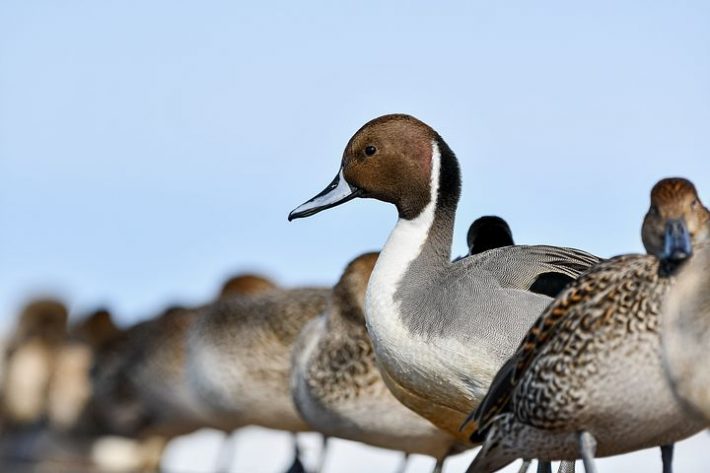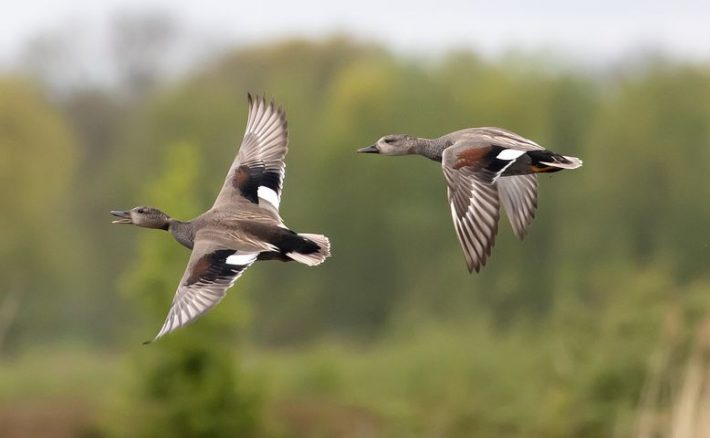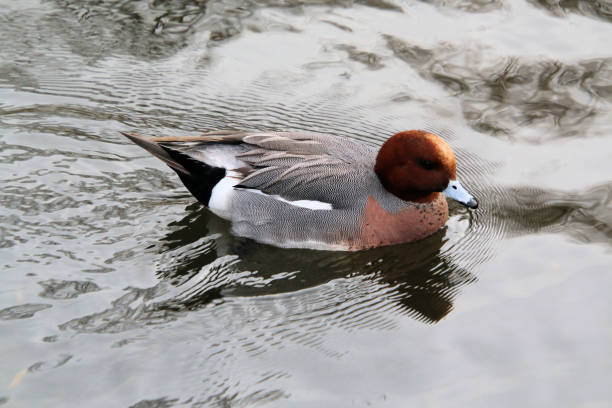Climate change puts early-nesting waterfowl at risk, says new study
Climate change and agriculture can lead to lower reproductive success and declining population numbers for early nesting waterfowl breeding in the Prairie Pothole Region. Researcher Frances Buderman discusses her new research published in Journal of Animal Ecology.

Each year around 10 million waterfowl fly to their breeding grounds in the Prairie Pothole Region of North America. However, changes in weather patterns and agricultural practices in recent history have significantly changed this region.
These changes have resulted in some types of waterfowl increasing in numbers whilst others have declined. A new study by Penn State University, published in Journal of Animal Ecology, has determined that nesting date is an important factor in determining which species thrive in the region.
Waterfowl nest in a variety of habitats throughout the region, including grasslands, croplands and over water. Lead author Frances Buderman explains “When early nesting waterfowl arrive in the Prairie Pothole Region, many fields are covered in debris from the previous Autumn’s harvest. Although this looks inviting, the eventual replanting of these fields makes the waterfowl more vulnerable to predators, as opposed to when the fields are allowed to lie fallow. It can also result in their nests being destroyed by agricultural activities such as tilling and planting.”
Waterfowl in this region are adapted to nest in mixed-grass prairie, but due to their wild habitat now being used as agricultural land, the birds can get confused. “The remains from last year look good to the birds from the air, but in reality they do not provide the same advantages and protection as grass. Over time, on a large scale, this can lead to lower reproductive success and declining population numbers for early nesting waterfowl breeding in the region.” continues Buderman
Earlier research from Buderman’s team focused on northern pintail ducks, a species that has been in decline since the 1980s. They identified their tendency to nest in agricultural fields as an ‘ecological trap’ as the number of pintail the following year declined with increasing use of cropland.
The team were left wondering if the response of the northern pintail was unique. However, their new study reports that the timing of nesting is a key factor in determining the effect of nesting in cropland on demographic processes.

Early nesting waterfowl had the strongest negative demographic responses to agricultural fields. “This isn’t to say that all early nesters are going to struggle,” Buderman clarifies. “Early nesting waterfowl that don’t nest in cropland, and diving species such as canvasbacks, nest over water and are not likely to be impacted by this trap.”
Climate change allows farmers to till and plant earlier in the spring, which could make matters worse. An earlier increase in temperature could also lead to a mismatch between nesting activities and food availability.
To reach their conclusions, the researchers analysed data from the Waterfowl Breeding Population Surveys from 1958-2011, one of the largest datasets on vertebrate populations in the world. They specifically focused on nine duck species that have traditionally used the Prairie Pothole Region as breeding grounds: American wigeon, blue-winged teal, canvasback, gadwall, mallard, northern pintail, northern shoveler, redhead and ruddy duck.

They first estimated the effects of changes in climate and types of land-use on habitat-selection and population changes for the nine species, evaluating species-specific responses to environmental change.
This allowed the researchers to identify patterns in where species nested that were detrimental to their populations. They found that northern pintail, American wigeon and blue-winged teal often had extreme responses to changes in habitat, although not always in the same way.
“Each of the species we studied reacted a bit differently to changes in climate and land-use, which complicates community-level habitat management,” explains Buderman.”Our work highlights the importance of multi-species monitoring and community-level analysis, even among closely related species.”
This article was based off of a Penn State University press release.
Read the full paper here:
https://besjournals.onlinelibrary.wiley.com/doi/10.1111/1365-2656.13919
Like what we stand for?
Support our mission and help develop the next generation of ecologists by donating to the British Ecological Society.